
2024 Granville P. Meade Scholarship Timeline and Procedures
- Subject:
- Career Connections
- Material Type:
- Student Guide
- Author:
- Sarah Bazemore
- Date Added:
- 03/08/2024

2024 Granville P. Meade Scholarship Timeline and Procedures

Information Technology is a broad field to learn about. Within IT there are many careers. This lesson is designed to help engage the students in the IT field where they will be able to research and discover various jobs they are interested in. Students will discover the education requirments, possible benefits of different jobs, salary, hiring demad, and growth potential in the field.The activities include: brainstorming, compare and contrast, research, writing, and using software either in Google or Microsoft.

Learn what happens when an animal is rehabilitated and returned to the wild. In many cases, we may never know, but there are a few ways post-release data can be gathered on former patients. This insight not only can prove that wildlife rehabilitation works, but post-release data can also contribute important information about overall wildlife populations. In this episode, join Center staff and wildlife researchers as they reflect on what some former wildlife patients have taught us.
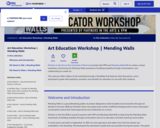
Partners in the Arts at the University of Richmond joined with VPM and Mending Walls RVA to create a virtual workshop, introducing the Mending Walls processes of building empathy through conversations, and collaborating to create art.
This resource offers videos of the workshop through a StoryMap that features artist discussions, and a participant’s guide with questions, prompts, and activities for educators to use with their students.

Learn why artists have been featuring food as a subject in their work for centuries. You’ve been told to eat your vegetables, but have you ever tried to paint them? Special Guest Lisa McLaughlin, the baker behind Jesse’s Girl Cookies, invites us into her kitchen to experiment with modern art techniques on cakes, and then we’ll make our own painting of a scrumptious treat inspired by 20th-Century painter Wayne Thiebaud.

Learn about the very busiest time of year for Wildlife Center staff, students, and volunteers -- baby season! Spring is a time for new life; many species of wild animals are giving birth or laying eggs and caring for young throughout much of the spring. It's also the time of year when people are more active; as the warm weather approaches, humans spend more time in their yards and gardens and in the great outdoors. This increased activity of both humans and wild animals can put us all in more direct contact with one another. There are a number of misinformation and misconceptions about young wild animals; learn from the Wildlife Center staff how to best help young animals stay in the wild with their parents. UNTAMED looks at the wild and often perilous world of wildlife, as seen through the eyes of the patients of the Wildlife Center of Virginia, a non-profit teaching and research hospital for native wildlife.

Learn how to set up a safe backyard habitat, including the critical components to make your yard a sanctuary for wild animals. Join Wildlife Center staff and backyard naturalists to learn how we can create safe spaces to attract wildlife while minimizing our impact and chance of disturbance for our wild neighbors.

Learn about Bald Eagles in this episode of UNTAMED. Wildlife Center staff members discuss the conservation successes of Bald Eagles, as well as the threats that eagles still face today, including lead poisoning and vehicle collisions. Buddy, the Wildlife Center's non-releasable Bald Eagle ambassador, is featured.

Learn about bats -- a diverse group of flying mammals that humans often associate with folklore, legends, ghost stories, and scary tales. But we have more in common with bats than we think -- these tiny mammals are socially intelligent and can have a rich social structure and means of communication with each other. Bats are not only fascinating, but they are also quite beneficial to our environment and play an important role in the habitats we share with them. These animals are in need of our help now more than ever as they face population declines and serious problems, most of which originate from humans.
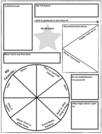
Learn all about your students with this About Me Handout! Teachers can give to students on the first day/week of school. Great for starting conversations, get to know you activities, or just to know about eah student.

Learn about migration, the seasonal movement of animals from one location to another. Join the Center staff and migratory bird experts as they explain why birds migrate, and the dangers that they may face along their journeys. Learn how to help migrating birds and why we should be concerned about more than just our own backyards.

Allow students the opportunity to explore their career goals! This activity will allow them to develop their research skills and provide a hands-on experience to help stretch their perspective. Let your students guide themselves into discovering new career path options!

This is a virtual learning hyperdoc assignment that could be used in any course to address related careers and/or information literacy skills, though it was developed for use with 9th grade English classes. If used in a state other than Virginia, the teacher would need to replace the resource Virginia Career View and related questions in phases 3 and 4, as well as in the “Learn More” box at the bottom.
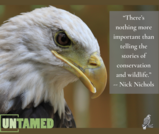
Learn more about how to find a career – or volunteer job! – in the vastly varied field of wildlife, as we highlight a wide range of backgrounds and education paths that can lead people to work with wildlife. The range of career paths that lead to working with wildlife is about as varied as the actual wildlife all around us. This episode features several different people working with or for wildlife, highlighting a collection of stories from their daily lives. Learn more about how to find a career – or volunteer job! – in this field, including the range of backgrounds and education paths that can lead people to work with wildlife. Even with a diversity of people, organizations, and agencies, roles, and responsibilities, a number of these professionals work together for a common goal of helping protect wildlife and the environment.
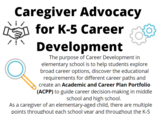
This is an infographic in English and Spanish for schools to inform caregivers of career development events and goals throughout the year. The second set of infographics have 2 blank sections for any school who wants to add their own information.

Learn the reasons why keeping cats—domestic pets—indoors is better for wildlife, the cats themselves, and human health. Outdoor cats cause significant problems for wildlife and the environment; these cats also have shorter lifespans and are subjected to many more dangers than their indoor counterparts. Join Center staff, health experts, and a cat behaviorist to learn how we can fix this human-caused issue and keep wildlife, cats, and the environment safer.
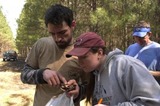
Citizen science is known as the collection and analysis of data relating to the natural world by members of the public. Those participating in citizen science projects and activities are not professional scientists; rather, this collaborative research is done by everyday people in a wide variety of settings around the world to help answer questions that scientists can’t answer by themselves. Whether participating in bird counts, water sampling, frog watches, butterfly monitoring, plant data, or other projects, anyone can find a fun and meaningful way to contribute to the scientific community, often providing valid insights into the natural world. For more information and classroom activities, please visit The Wildlife Center of Virginia and VPM UNTAMED websites

In this lesson plan and video, students will explore various solutions by simulating different policies in a model and about how people have started to tackle climate change within their careers.

Learn about one of the biggest impacts that humans have on their environment—Litter. It isn’t just an aesthetic problem; it has serious impacts on habitats, wildlife health, as well as human health and safety. The consequences of even small acts of littering can be far-reaching and long-lasting. Join the Wildlife Center staff and watershed conservation authorities to learn more about the problems litter can pose, as well as a variety of ways that you can help reduce litter.
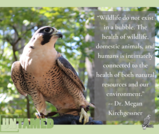
Learn about where diseases come from. How are they spread? This episode examines a variety of emerging wildlife diseases, with an emphasis on the One Health concept. While some disease outbreaks may be “natural”, human behaviors and influences are adding additional pressure on wildlife and the landscape, and in the end, all of us – humans, wildlife, and the environment – are affected. Learn more about the field of emerging wildlife diseases and the continually evolving research on what those diseases tell us.